The Aftermath of the RMS Titanic Disaster

Lady Duff-Gordon Tells Her Story at Titanic Inquiry. Top Left: Sir Cosmos Duff-Gordon Left the Scottish Hall After Denying the Allegation That He Opposed the Suggestion to Rescue the Drowning. Top Center: Lady Duff-Gordon Answering Questions on the Witness Stand. Top Right: Lady Duff-Gordon and Sir Cosmos Duff-Gordon at the Doorway, Leaving the Titanic Inquiry for Lunch Yesterday. Bottom: A Remarkable Scene Was Witnessed at the Titanic Inquiry When Sir Cosmos and Lady Duff-Gordon Gave Evidence Yesterday. the Hall Was Packed. News of Traditionally Dressed Women Looked Down From the Galleries. Outbursts of Applause Were Frequent When Lord Mersey Stopped the Council for the Third-Class Passengers, Mr. Hartbloum, From Putting What His Lordship Considered Were Unfair Questions to Sir Duff-Gordon. Daily Sketch, No, 908, Tuesday, 21 May 1912, p. 1. GGA Image ID # 110a96eac5
Introduction
The sinking of the RMS Titanic on April 15, 1912, remains one of the most catastrophic and scrutinized maritime disasters in history. As the "unsinkable" ship descended beneath the icy waters of the North Atlantic, it took with it over 1,500 souls, leaving a mere 705 survivors. The aftermath of this tragedy reverberated around the globe, leading to a series of public inquiries, reforms, and a deeper examination of human error, technological hubris, and the fundamental principles of safety and responsibility. This index page, "The Aftermath of the RMS Titanic Disaster," provides a comprehensive overview of the various articles, testimonies, and reflections that emerged in the wake of the disaster, each offering unique insights into the causes, consequences, and lessons of the Titanic's ill-fated voyage.
Picture, if you will, the World's most renowned ship was going to her doom in the darkness of the night, taking with her 1,635 passengers and crew with a mere 705 survivors. Public inquiries and investigations on both sides of the Atlantic culminated in new laws, making ocean-going travel safer. With the myth of the unsinkable ship debunked, the aftermath of the tragedy of the Titanic will live on for infinity.

Titanic: A Great Tragedy's Warning and Inspiration - 1912
The article discusses the lessons and moral reflections drawn from the tragic sinking of the RMS Titanic, highlighting the tension between the pursuit of luxury and speed and the fundamental value of human life and safety.
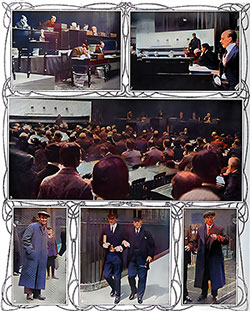
The RMS Titanic Inquiry in London - 1912
The article covers the British Inquiry into the sinking of the RMS Titanic, exploring the testimonies, key figures involved, and the broader implications for maritime safety and conduct.

At the Toll of Death, the World Mourns - 1912
The article captures the immense grief, the outpouring of public emotion, and the calls for reform in maritime safety to prevent future tragedies.
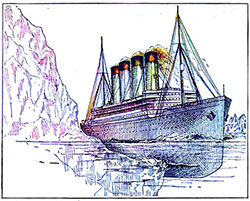
Expert Opinions on What Happened - 1912
The article compiles expert analyses and opinions on the sinking of the RMS Titanic, examining the causes of the disaster, the ship's construction and vulnerabilities, and recommendations for future safety measures.
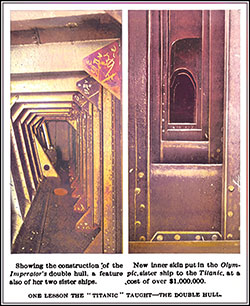
Fruits of the Titanic Disaster - 1913
The article reflects on the significant changes and improvements in maritime safety and shipbuilding practices that resulted from the tragic sinking of the RMS Titanic.
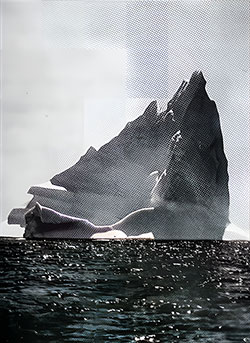
Ice in the Sea Lanes Sailed by the Titanic - 1912
The article examines the presence of icebergs in the North Atlantic sea lanes, the dangers they posed to transatlantic shipping, and the specific conditions that led to the sinking of the RMS Titanic.
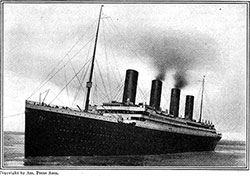
Lessons from the Titanic Disaster
The article reflects on the key lessons learned from the Titanic disaster, focusing on improvements needed in ship design, lifeboat provisions, and safety regulations to prevent similar tragedies in the future.

Life-Saving Craft Aboard Ocean Liners - 1912
The article focuses on the state of lifeboat provisions aboard ocean liners like the RMS Titanic, the shortcomings in maritime safety regulations of that era, and the subsequent reforms to improve passenger safety.

Responsibility for the Titanic Disaster - 1912
The article examines the ongoing investigations into the sinking of the RMS Titanic, highlighting the search for accountability and the individuals and entities considered responsible for the tragedy.
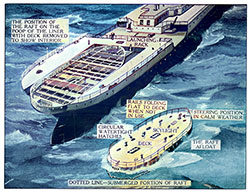
Scientific Aftermath of the Titanic Disaster - 1912
By examining the critical responses of various engineering and scientific publications, the article reveals the complex interplay of engineering decisions, safety protocols, and emergency preparedness in modern maritime travel.
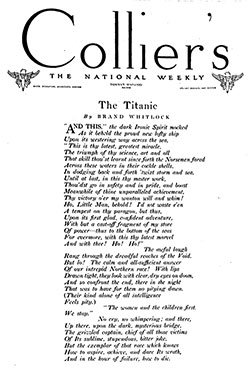
The Titanic - A Poem by Brand Whitlock
Written shortly after the tragic sinking of the Titanic on April 15, 1912, Whitlock's poem captures the human spirit, the irony of technological advancement, and the stoic bravery displayed in the face of disaster. Through vivid imagery and stark reflection, Whitlock's poem examines the hubris of mankind, the unforeseen power of nature, and the enduring strength of the human spirit.
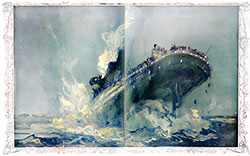
The Titanic Horror - April 1912
The article illustrates the world's shock at the loss of what was believed to be an invincible ship, the Titanic. It pays tribute to the heroism of those who faced their doom with courage and critiques the societal obsession with speed and luxury that contributed to the disaster.
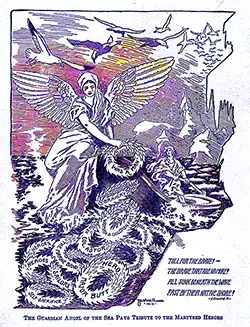
The article goes beyond recounting the event, delving into the public outrage and critical commentary that emerged in the wake of the disaster. It discusses the avoidable nature of the tragedy, the lack of adequate safety measures on the ship, and the dangerous prioritization of speed and luxury over safety by the White Star Line and its competitors.

Titanic - A Sacrifice to Speed! - 1912
The article highlights the emotional impact of the tragedy, mourning the loss of prominent individuals and lamenting the broader sacrifice of human lives to the pursuit of speed.
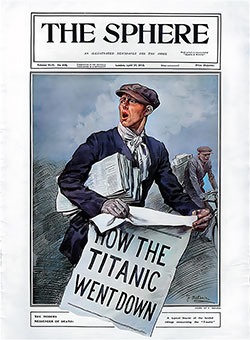
The Titanic Story Unfolding at a Newspaper - 1912
Through a minute-by-minute recounting of their actions, the narrative showcases the challenges and complexities of journalism during one of the most shocking maritime disasters of the early 20th century.
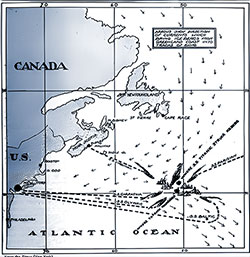
The Tragedy of the Titanic And Its Lesson - 1912
The article provides a detailed account of the ship's engineering achievements, the circumstances of its sinking, and the broader implications for maritime safety. It highlights the need for international regulations, accountability, and a reassessment of the public's demand for speed and luxury over safety.
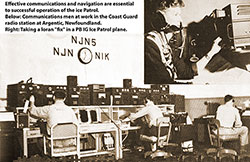
In the aftermath of this tragic event, the need for a systematic and reliable way to monitor and report iceberg dangers became evident. The result was the establishment of the International Ice Patrol (IIP) in 1914, a service dedicated to ensuring the safety of transatlantic ships navigating through iceberg-prone waters.

The Legacy of the SS Californian
This article delves into the legacy of the SS Californian, examining its actions—or inactions—on the night of the Titanic disaster, the subsequent investigations and controversies, and the broader implications for maritime safety and communication standards that followed. The story of the Californian serves as a poignant reminder of the crucial importance of vigilance, communication, and decisive action in averting disaster at sea.
Key Points
-
Public Inquiries and Legal Reforms: Both the British and American inquiries into the disaster, as well as subsequent legal reforms, highlighted critical failures in safety regulations, ship design, and the lack of adequate lifeboats. These inquiries resulted in significant changes in maritime law and safety protocols.
-
Human Stories and Personal Accounts: The testimonies of survivors like Lady Duff-Gordon and Mr. J. Bruce Ismay revealed the emotional and moral complexities faced during the disaster, from accusations of cowardice to tales of bravery and sacrifice.
-
Critical Reflections on Maritime Safety and Technology: Several articles discuss the technical and scientific aspects of the tragedy, examining the flaws in the Titanic’s design, such as the single-hull construction and the inadequacies of its safety equipment. The sinking also debunked the myth of the "unsinkable" ship, sparking widespread debate on the need for better safety measures.
-
The Role of the Media and Public Perception: The way newspapers covered the disaster and the ensuing inquiries played a crucial role in shaping public perception, galvanizing demands for accountability, and driving home the message that human lives should never be sacrificed for luxury or speed.
-
The International Ice Patrol and Improved Navigation: In response to the disaster, the International Ice Patrol was established in 1914 to monitor iceberg dangers in the North Atlantic, demonstrating an international commitment to preventing future tragedies.
-
Moral and Philosophical Reflections: From poetry to editorials, many writers reflected on the broader moral lessons of the Titanic disaster, contemplating the limits of human ambition, the dangers of technological hubris, and the enduring strength of the human spirit in the face of calamity.
-
The Legacy of the SS Californian: The controversial role of the SS Californian, which was criticized for its inaction on the night of the sinking, remains a potent lesson in the necessity of vigilance, effective communication, and decisive action in crisis situations.
Summary
"The Aftermath of the RMS Titanic Disaster" offers a multifaceted exploration of the Titanic's sinking, covering technical, legal, emotional, and moral dimensions. The index captures the immediate public response, the ongoing investigations, and the sweeping changes that were implemented to prevent future disasters. It provides insights into how the world grappled with the tragedy, from the inquiries that sought to assign blame and learn lessons, to the scientific analyses that debated what went wrong, and to the cultural reflections that pondered the human condition. The catastrophe not only marked the end of an era of unbridled faith in technology but also ushered in a new age of maritime safety and accountability.
Conclusion
The sinking of the RMS Titanic was more than just a maritime disaster; it was a global wake-up call that forced society to confront its assumptions about safety, technology, and human nature. The aftermath of the tragedy saw a concerted effort to overhaul maritime safety standards, ensuring that the sacrifices of those lost were not in vain. The extensive reflections, inquiries, and reforms chronicled in the articles listed in this index reveal a world determined to learn from its mistakes and committed to safeguarding the future. As the legacy of the Titanic continues to inspire caution, innovation, and reflection, it reminds us of the delicate balance between human ambition and the need for responsibility and humility in the face of nature's vast, unpredictable power.
